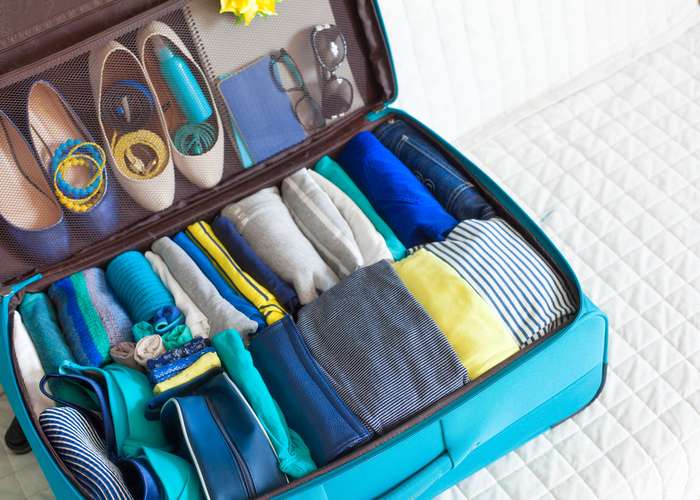Moving With Roommates: A Guide for a Hassle-Free Experience
June 3, 2024
Moving with roommates can be an exciting chapter in your life. It’s a chance to share space, responsibilities, and create lasting memories with friends or new acquaintances. However, the process of moving with someone, whether they are friends or strangers, involves careful planning, communication, and organization. In this guide, we will explore the ins and outs of moving with roommates, providing you with valuable tips and insights to make your shared living experience smooth and enjoyable.
Before delving into the moving process, it’s essential to find compatible roommates. Here are some valuable resources and tips to help you find the perfect match:
Moving in with someone, whether they are lifelong friends or newfound acquaintances, requires careful consideration and communication. Here are essential factors to ponder before making the big move:
Once you have found compatible roommates and discussed essential matters, it’s time to tackle the logistics of the move. Here’s a step-by-step guide to help you navigate the moving process seamlessly:
Before packing, declutter your belongings. Dispose of items you no longer need or use. Utilize sturdy boxes, bubble wrap, and packing paper for fragile items. Consider labeling your boxes to make unpacking more manageable.
Pro Tip: Decluttering before the move not only reduces the volume of your belongings but also makes unpacking in your new home much easier.
When moving with roommates, hiring a professional moving company can save you time and effort. Look for reputable moving companies that offer services tailored to your needs. Read reviews, ask for recommendations, and compare quotes to make an informed decision.
If you are downsizing or have excess belongings, consider renting a storage unit. Moving storage facilities provide a secure space to store your items temporarily. This option is particularly useful if your new home has limited storage space.
Note: Storage units are also beneficial for individuals undergoing interstate moving. They offer a convenient solution for storing belongings during the transition period.
Moving to another state introduces unique challenges. Research the regulations and requirements associated with interstate moving. Plan your move well in advance, considering factors such as transportation logistics, legal documentation, and the timeline for settling into your new residence.
Moving with roommates can be a rewarding experience when approached with careful planning and open communication. By finding compatible roommates, discussing essential matters beforehand, and tackling the moving process strategically, you can create a harmonious living environment for everyone involved.
Remember, moving with friends or new acquaintances is not just a physical transition but also an opportunity to foster meaningful connections and create a home filled with laughter, support, and shared experiences. Embrace the journey, communicate openly, and cherish the bond you build with your roommates. Here’s to a seamless move and the beginning of a wonderful chapter in your lives!
Are you planning to move to a new place? Whether it’s a local move or a long-distance journey, you might be tempted to save some money by taking the DIY route. After all, moving on your own seems like a cost-effective choice, right? Well, think again. In this article, we’ll delve into why DIY moving can often be a waste of time, money, and effort. We’ll also explore some alternatives that could make your move a breeze.
One of the first challenges you’ll encounter when moving on your own is the heavy lifting. Moving furniture, appliances, and boxes can be backbreaking work. Not only can it lead to physical injuries, but it also consumes a significant amount of your time. Wouldn’t it be nice to have a professional team take care of this for you? Companies like Two Men and a Truck specialize in just that.
Moving requires careful planning and organization. Packing your belongings, disassembling furniture, loading a truck, and driving to your new destination can take up an enormous amount of time. If you factor in the time you’ll need to take off work, it can end up costing you more than you’d expect. Professional moving services can save you precious time, allowing you to focus on other essential aspects of your move.
Some might consider renting a trailer for DIY moving, thinking it’s a cost-effective solution. However, trailer rental comes with its own set of challenges and hidden costs. First, you’ll need the necessary equipment to tow the trailer, which might require you to rent or purchase a hitch and other accessories. Moreover, you’ll be responsible for driving a larger vehicle, which can be stressful and even dangerous, especially if you’re not used to it.
While contemplating DIY moving, some individuals might think about cutting costs by living inside a storage unit temporarily. However, it’s essential to be aware that this practice is illegal in many places. Not only does it pose safety concerns, but it also raises ethical questions. Living in a storage unit can have severe legal repercussions and can lead to eviction from the facility.
Moving pods, also known as portable storage containers, are another option that might seem attractive for DIY movers. While they offer convenience, they come with their own set of challenges. Loading and unloading a moving pod can be physically demanding, and if not packed properly, your belongings can get damaged during transit. Get answers to frequently asked questions about moving pods and learn some valuable tips at Facts About Moving Pods: FAQs, Cost, and Tips.
If you want to avoid the drawbacks of both traditional DIY moving and moving pods, consider using professional moving containers. These containers offer a perfect balance between convenience and cost-effectiveness. You can pack your belongings at your own pace, and a team of experts will handle the transportation.
Moving is a complex task that involves a lot more than just transporting your possessions from one place to another. Professional movers have the expertise and experience to make your move smooth and stress-free. Here are some compelling reasons to hire professionals for your next move:
While DIY moving might seem like a cost-effective option, the hidden costs and challenges it presents often make it a waste of time and effort. Instead of struggling with the heavy lifting, time-consuming planning, and potential legal issues, consider the value of professional movers. They can provide expert assistance, saving you time, money, and stress, ultimately making your move a breeze.
In summary, the benefits of hiring professional movers, such as Two Men and a Truck, far outweigh the hassles of DIY moving. Whether you opt for moving containers or traditional moving services, you’ll find that your move can be efficient and cost-effective without the DIY headaches. So, if you’re planning your next move, take a moment to explore the alternatives before deciding to go the DIY route. Your back and your wallet will thank you!
If you love the idea of packing up and moving to a new city and live anywhere, what are the things you consider when choosing the best places to move the US? Before you use our moving search tool, you might want to read this one.

Choosing the best places to move to the US can be meaningful and stressful. That is why we put together a list of what is the best place to live in the US in 2020.
Moving to Another Place? Check out our list of the Best Interstate Moving Companies of 2020
Also, Read:
Reasons to Move to Charlotte, North Carolina
Best Interstate Moving Companies
Best Interstate Moving and Storage
Cheap Moving Companies
Also, Read: The Best Cities to Live in 2021
Criteria are based on US News & World Report used data from sources like the United States Census Bureau and the Department of Labor. This includes job opportunities in the US, quality of life, and housing costs. For three consecutive years, Austin Texas tops the list because of its strong job market, high quality of life, and based on the area’s value of money.
Also, Read: Best Cities for Starting Up a Business in the US

These are picked out of the 125 most populous metro areas to find the best places to move in the US. Lots of individuals’ preferences involved when it comes to deciding on the place the best place to live. However, there are general aspects that should be considered.
Also, Read: Moving to Pennsylvania Guide, Moving To Keystone State 2020
You gain a lot of moving to a new city, especially if you are looking for a job opportunity, to learn more culture and most especially to change your life better.
Also. Read: Top 5 Of The Most Safest and Cheapest Places to Live in America
Everybody wants to save money. Most people find ways to save buck from restaurants, subscriptions, utility bills, and so on. Most people move to places to save on living expenses. If you are planning to lower your expenses, moving to an affordable city might be a solution for you. Here, we are going to talk about the safest and cheapest places to live in America. [ Continue Reading ]
RELATED POST
It is not enough to search the “most preferred interstate moving” or best interstate moving & storage. If you are planning to move, this obviously the first step for every consumer to do. Begin to research as soon as possible if you decided to move. Some moving companies have an option that allows you to book as early as 3 months or a month ahead of your moving day.
Check mover’s reviews on the BBB (Better Business Bureau) website, look for customers’ complaints or legal actions against again. However, It is much better to ask anyone who recently moved from your family, colleagues, or friends.
Don’t be fooled to an eye-catching website or promotional ads. It is easy to design a good website to scam people. If you need a reliable source to check reviews, look up reviews and comments on Yelp on each moving company.
Also, Read: The Most Difficult Part of DIY Moving
As you begin your search, you need to familiarize yourself with the terms of the companies. Some examples are binding and non-binding quotes. Look for companies’ Motor Carries number and US Department of Transportation number if it is matched on the company name.
RELATED ARTICLES
Moving Tip: Garage Sale Helps you Lighten up your Load
Tech Tips for Your Home Security after Moving
Important Things to do after a Successful Moving
Things to Know Before Moving Your Things into a Storage Unit
Storage 101: The Ultimate Guide to Storage Unit
Ready to move? Ensure a smooth transition with “The Ultimate Moving Checklist: A Step-by-Step Guide to a Smooth Move”. This checklist will guide you through every phase, making your move effortless and organized.
Go through each room. Decide what to keep, donate, sell, or throw away. Reduce clutter for a lighter move.
Look for reliable movers. Check reviews and ask friends for recommendations. Compare quotes from different companies.
List all expected expenses. Include moving company fees, new furniture, and travel costs to avoid surprises.
Buy boxes, tape, bubble wrap, and markers. Good quality supplies protect your belongings.
Start packing items you won’t need immediately like seasonal clothing and books.
Use a clear labeling system. Mark each box with its contents and intended room to ease unpacking.
Related Post- Surviving Long-Distance Move: A Comprehensive Checklist
Arrange the disconnection of current services and setup at your new home. Think about electricity, water, gas, and internet.
Update your address with banks, subscriptions, and government bodies. Don’t forget to redirect your mail.
Organize personal documents such as passports, birth certificates, and insurance papers. Carry these with you during the move.
Double-check your appointment with the moving company. Confirm the date, time, and details.
Make arrangements for moving your plants and pets safely. Consider climate controls and car safety.
Include items you’ll need immediately like toiletries, snacks, a few dishes, and chargers. Keep it accessible.
Pack the rest of your items. Check drawers, closets, and shelves to ensure nothing is left behind.
Clean your current place to ensure it’s ready for the next occupants and to secure your deposit return.
Ensure you have enough medications, pet food, and any other essentials for the next two weeks.
Be on-site to oversee the movers. Ensure possessions are handled with care and packed correctly.
Check every room and closet. Make sure you haven’t left anything behind.
Start by unpacking your essentials box. Gradually, set up your new home room by room.
Also Read- The Ultimate Commercial Moving Checklist
Focus on fully unpacking one room at a time. This method reduces chaos and increases functionality.
If needed, register with local services such as healthcare providers, and vehicle registration if you’ve moved states.
Once settled, a small housewarming party can feel like a nice conclusion to your moving process.
Follow “The Ultimate Moving Checklist” for a stress-free move. Take it step by step, and soon you’ll be enjoying your new home to the fullest. Moving can be daunting, but with the right preparation, it’s perfectly manageable. Enjoy making new memories in your new space!
Let’s face it, no one wants to go a week without clean underwear following a move and to pack your clothes when you move. Unfortunately, a lot of individuals experience this! There are so many details to consider before moving. It’s easy to lose sight of the important things, like how we pack our clothes, in the midst of it all.
If you’re planning a big move and want to reduce stress during a move, one of the most effective things you can do is improve your packing method, particularly when it comes to your clothes. You can easily settle into your new house if you prioritize packing clothing.
After a relocation, most people require about a week to settle into their new home. Pack a luggage as though you’re going on a weeklong vacation to make the changeover easier.
Put your favorite clothes, toiletries, prescriptions, and a few pairs of shoes in it. This saves you the trouble of looking for sweatpants at the bottom of your bag or wondering where your footwear went.

Also Read: Packing 101: Moving Kitchen Appliances
Do you have a lot of space in your closet? Don’t be discouraged. It makes a huge difference how you pack your clothes. And, happily, when you know what measures to take, even a large closet can be packed. With that in mind, try the following method for a perfectly stuffed closet.
Nobody wants to prolong their relocation by bringing large, cumbersome suitcases of clothes they will never wear. Many Americans believe that moving is more stressful than spending a week in jail because of this tendency. Before you begin your move, go through your closet to avoid this. Get rid of anything you haven’t worn in a year, anything that doesn’t fit, and anything that requires adjustments you aren’t likely to make.
Also Read: Packing and Moving A Mirror Like A Pro
Would you fold a suit and stuff it in the bottom of the box? When it comes to apparel, there is no such thing as a one-size-fits-all guideline. Instead, adhere to the following guidelines:
Hang your things in wardrobe bins. Wardrobe boxes allow you to transfer your hanging clothing — hangers and all – directly to a box. They’re both affordable and simple to use.
Fill drawers to the brim. Leave your clothes in your drawers if you’re hiring movers. Moving firms have the necessary equipment to carry large items, so this strategy will make unpacking a breeze.
Wrap your clothing that are hanging. Take a huge garbage bag and stuff it with your hanging clothes. Fasten the cinches around the hanger’s necks and voila! To keep the garments in shape, drape the bag over a cart or crate.
Off-season apparel should be vacuum sealed. You won’t need to dig through your off-season wardrobe right away. In order to keep them clean and safe during your transfer, vacuum seal them.
Knowing how to pack clothes for a relocation might help alleviate some of the stress that comes with the process. If you pack your clothes appropriately, they’ll be easy to unpack, undamaged, and wrinkle-free when you arrive.
Meanwhile, basic strategies such as packing a suitcase and storing often used items at the top of your boxes can ensure that you are dressed and stress-free when you arrive at your new location.
Do you require professional moving assistance? Get in touch with WowMover right now. We’re here to assist you with your major change!

If you’re considering relocating to the southern United States, you may want to consider one of these urban neighborhoods that provide opportunities to work from home and save money. After the pandemic, These are the list of the best US cities to live in.
San Angelo has the lowest population density of any metro region in the South, with 34.9 people per square mile. With a weekly commuting time of two hours and 53 minutes, this city has the second shortest commute time in the country.

Wichita Falls has the sixth-lowest population density among Southern metro areas, with 57.7 residents per square mile. The cost of living in this metro area is 12.4 percent lower than the national average.

This metro area has the highest proportion of work that can be done from home ( remote jobs ), at 51.9 percent. The city also has the ninth highest average spending per student in elementary and secondary public schools in Southern metro areas, with the school district with the most students spending $13,223 per person.
Tallahassee has the fifth-highest share of employment that can be done from home among Southern metro areas and the 14th-highest share of all US metro areas. The unemployment rate before the coronavirus was 2.9 percent, lower than the US rate of 3.5 percent in February.

This metro area’s weekly commuting time of three hours and three minutes is the fourth shortest in the South. College Station has the sixth-highest percentage of jobs that can be done from home among metro areas in the country, at 42.1 percent.
Moving is a traumatic experience. It’s much more difficult to relocate during a pandemic. WowMover is as busy as any other summer, with new rules in place to keep everybody safe and in compliance with the Centers for Disease Control and Prevention. WowMover has not only implemented new client-interaction procedures, but they’ve also adjusted their internal operations by staggered schedules, limiting the number of people in their offices, and supplying staff with the requisite supplies to keep them secure. Wowmover can help make a pandemic relocation less stressful, effective, and secure.
Lifting straps are a valuable tool in the world of weightlifting and heavy object transport. They are designed to assist individuals in gripping and lifting heavy loads with greater ease and efficiency.
Lifting straps are typically made of strong, durable materials such as nylon or leather and are designed to wrap around the wrists and the barbell or object being lifted. They provide additional support and grip, especially when the weight exceeds what the hands can comfortably hold.
The primary purpose of lifting straps is to enhance grip strength and stability when lifting heavy objects. By allowing the lifter to maintain a secure grip on the weight, lifting straps can help prevent slipping or dropping of the load, reducing the risk of injury and allowing for more effective workouts.
To understand how lifting straps work, it’s essential to delve into the mechanics behind their design and functionality.
Lifting straps function by transferring the force of the weight from the hands to the wrists and forearms. By creating a loop around the wrist and connecting it to the barbell or object, lifting straps distribute the load more evenly across the entire hand and arm, reducing strain on specific muscles and joints.
When properly secured, lifting straps create a tight bond between the lifter’s hands and the weight, effectively eliminating the need to rely solely on grip strength to hold the load. This allows the lifter to focus more on the targeted muscle groups being worked and less on maintaining their grip on the weight.
The use of lifting straps offers several advantages for weightlifters and individuals involved in heavy object transport.
By providing additional support and stability, lifting straps allow lifters to lift heavier weights than they could with their bare hands alone. This helps to stimulate muscle growth and strength development, leading to improved overall performance in the gym.
Because lifting straps alleviate the strain on the hands and forearms, lifters can perform more repetitions and sets without experiencing premature fatigue. This enables them to achieve greater training volume and intensity, leading to more significant gains in strength and muscle mass over time.
Lifting straps allow lifters to maintain proper form and technique throughout their lifts, ensuring that the targeted muscles are effectively engaged and stimulated. This can lead to more efficient workouts and better results in terms of muscle growth and development.
There are several different types of lifting straps available, each designed to suit specific needs and preferences.
Standard lifting straps are the most common type and consist of a single loop of material that wraps around the wrist and the barbell or object being lifted. They are versatile and suitable for a wide range of exercises and lifting applications.
Figure-8 lifting straps feature a unique design that forms a figure-eight shape when wrapped around the wrist and the barbell. This design provides additional support and stability, making them ideal for heavy lifting and maximal strength training.
Versatility straps combine the features of both standard and figure-8 lifting straps, offering the flexibility to adjust the length and tension of the strap to suit individual preferences. They are ideal for lifters who require maximum versatility and customization in their lifting gear.
While lifting straps can be incredibly beneficial, it’s essential to use them correctly to ensure safety and effectiveness.
To use lifting straps effectively, start by wrapping the strap securely around the wrist, ensuring that it is snug but not too tight. Position the strap between the thumb and fingers to create a secure grip on the weight.
Once the strap is in position, wrap it around the barbell or object being lifted, making sure to create a tight seal between the strap and the surface of the weight. Pull the strap tight to eliminate any slack and ensure a secure grip.
When using lifting straps, it’s crucial to maintain proper form and technique throughout the lift. Avoid jerking or swinging the weight, as this can lead to injury or strain. Additionally, be mindful of the weight being lifted and ensure that it is within your capabilities.
In addition to weightlifting, lifting straps can also be used for transporting heavy objects safely and efficiently.
When moving heavy objects, proper lifting techniques are essential to prevent injury and strain. Use your legs to lift the weight, keeping your back straight and using your core muscles to stabilize the load.
Lifting straps can be a valuable tool for moving heavy objects such as furniture, appliances, or boxes. Simply wrap the straps around the object and secure them in place, then use the straps to lift and carry the load with ease.
Depending on the size and weight of the object, it may be necessary to enlist the help of others when transporting heavy loads. Team lifting with lifting straps can distribute the weight evenly among multiple individuals, reducing the risk of injury and making the task more manageable.
While lifting straps can be beneficial, there are some common mistakes that lifters should avoid to ensure safety and effectiveness.
While lifting straps can help enhance grip strength and stability, it’s essential not to become overly reliant on them. Practice proper grip techniques and gradually increase grip strength over time to avoid dependency on lifting straps.
Improper placement of lifting straps can compromise their effectiveness and increase the risk of injury. Always ensure that the straps are securely wrapped around the wrist and the weight, with no excess slack or looseness.
When using lifting straps, it’s essential to follow safety guidelines and recommendations to prevent injury. Avoid lifting weights that are too heavy for your capabilities and always use proper form and technique to minimize the risk of strain or injury.
When and how should you incorporate lifting straps into your workout routine?
Lifting straps can be beneficial for heavy compound lifts such as deadlifts, rows, and pull-ups, where grip strength may be a limiting factor. Use lifting straps when performing exercises with heavy loads or high repetitions to maximize muscle engagement and minimize fatigue.
While lifting straps can be an effective tool for enhancing grip strength and stability, there are alternative methods for improving grip strength, such as grip-strengthening exercises, chalk, or grip-enhancing gloves. Experiment with different options to find what works best for you.
Lifting straps are a valuable tool for weightlifters and individuals involved in heavy object transport, offering increased grip strength, reduced fatigue, and improved muscle engagement. By understanding the science behind lifting straps and incorporating them into your routine properly, you can enhance your performance in the gym and reduce the risk of injury.
Moving out of state is an undertaking completely all on its own, however, it is loaded with as much excitement as it is an effort. One aspect of the experience, in any case, that is regularly disregarded is the adaption to the new home. The United States is a combination of numerous states, however of different atmospheres and elevations.
A state-to-state move can involve you moving to an immeasurably extraordinary atmosphere that will affect your wellbeing. For example, moving from Colorado to Florida will have two significant changes in the body. For one Colorado has a chilly climate that can easily get below freezing though Florida rarely even has to stress over ice on anything but their beverages. Going from a colder atmosphere to a hotter one, you will wind up sweating quicker and rapidly running out of breathing while out in the heat.
You may likewise experience the ill effects of the adjustment in elevation. Colorado has mountain ranges while Florida’s most elevated points will in general be a bridge. Fortunately going from higher elevations to lower elevations will in general be simpler than the opposite.
Someone moving from Florida to Colorado will discover their body attempting to adjust to the adjustment in elevation. This is because at higher heights the air is thinner, which means there is less oxygen to breathe. While there is plenty to endure, you will end up quickly running out of breathing until your body adjusts. If you are an athletic individual, try to find a steady speed when running. You won’t have the option to run as far or as hard from the start.

There are different changes to consider while moving to start with one state then onto the next. One thing that you have to consider is how much dust will be noticeable all around. A few states don’t have a lot of dust or pollen while others have clouds of it. Which carries us to the point of sensitivities or allergies. Ensure you’re not moving to a location that will bother you more than you will appreciate it.
One of the states with the most exceedingly awful pollen is Kentucky, alongside Tennessee. The overall territory is substantial with pollen. One of the states considered the best for individuals with sensitivities is California.
At the point when you move to another state, it ought to be an energizing new experience. So prepare and plan accordingly. Let your body adjust to moving to another location and another climate. In time you will become used to the progressions and can go full throttle into your new life.
Before you arrive, though, let Wowmover assist you with getting moved into your new home in your new state. Click Here to get a free moving estimate.
Considerations When Building A Fence After You Move, If you’re moving to a new home, you may want to repair or replace your fence. What are your responsibilities, laws, and fence etiquette when it comes to your neighborly responsibilities and fence etiquette?
The threshold of the land boundary is the first thing you cross when you relocate to a new property. The invisible line that demarcates what piece of land you own, legally separating it from the property next door and what land is open to the public.
The concept of building your home with a fence is centuries old; you may not need to dig a moat or build a drawbridge, but securing your land with a border fence sends a strong message to the outside world that you should only enter by invitation or “at your own risk.”
Fence etiquette, believe it or not, exists! Even if you plan on erecting a fence around your property within the confines of the law, there are things that aren’t necessarily specified in the law that could irritate your neighbors if you proceed without their consent. You may need to consider influences such as history, aesthetics, environment, corporate neighborhood management, or design, depending on your neighborhood and the tone of where you live.
Finally, if the fence is created within your property’s limit and you meet the requirements, you have the right to build whatever style of fence you like. It all comes down to consultation and being willing to modify your views if someone truly dislikes the plan– else, things could go nasty!
Also Read: What Is the Legal Description of Property?

Some things to think about when it comes to fence etiquette:
There are many different types of fences and materials to choose from to construct the boundary you desire. However, your budget and needs will ultimately determine what you choose. If your property is large, you will require more fencing, materials, and labor to accomplish the project. If you install a simple wire fence instead of a full brick fence with a retaining wall and elaborate Victorian-era style wrought iron gates with a smart open feature and smart home security, for example, you will save money.
Brick, stone, wood, Colorbond steel, corrugated iron, concrete, PVC/vinyl, glass, and wrought iron are all options. Depending on your selected design, your fence can be made of a variety of materials. If you’re like arts and crafts, you can even upcycle old materials. Plan your fence to withstand strong sunlight and heat, mold and mildew, traffic, pollutants, floods, landslides, and other local environmental variables. Do you live in a coastal suburb? There’s a chance you’ll have to deal with salt spray and rust.
Also Read: How To Handle Property Line Issues?
Make sure your fencing contractor is licensed and insured, as substandard construction can lead to a fence’s early demise. The average cost of building a fence is varied greatly based on the requirement and the materials used. It’s usually calculated by the meter, but the rate might take into account a variety of factors to enhance or decrease the installation’s complexity.
Fencing costs can include the following:
To create the foundation of any quotations, your potential contractor should come to the property for a preliminary examination.
If you’ve moved into a home with an existing fence, inspect it for flaws such as unstable posts, weak palings, inadequate foundations, rot, cracking, movement, rust, termites, and so on. If possible, repairing your fence rather than building a new one will save you money in the long run.
The barrier was built with one goal in mind: to keep people safe while keeping them out. The fence was the greatest emblem of riches and power in medieval times. If you fenced your community, you were erecting a barrier against potential enemies and declaring your willingness to battle to defend what you had built. Our fences are the last line of defense against the “outside,” but they are also a powerful barrier against burglary and home invasion.
Related Articles:





